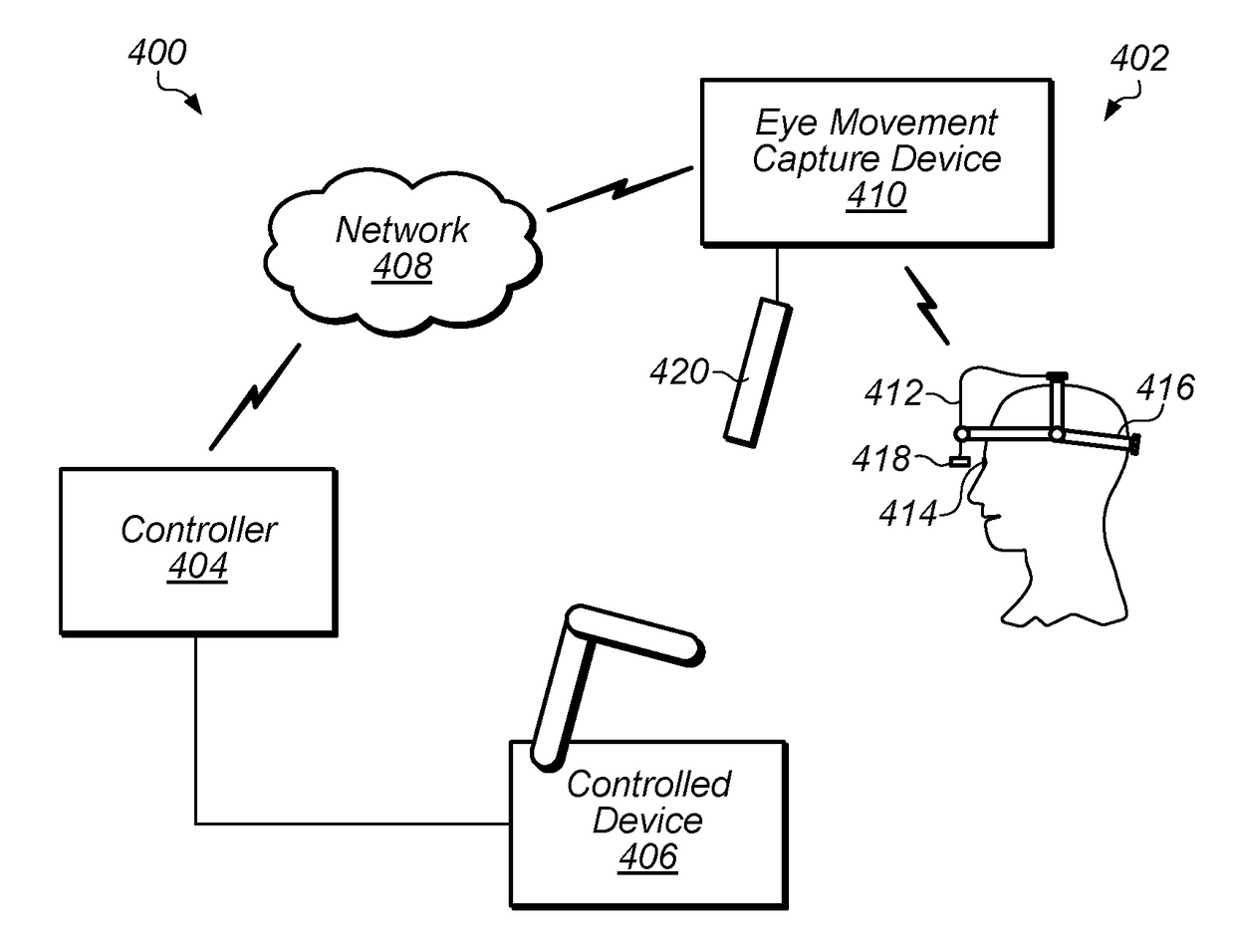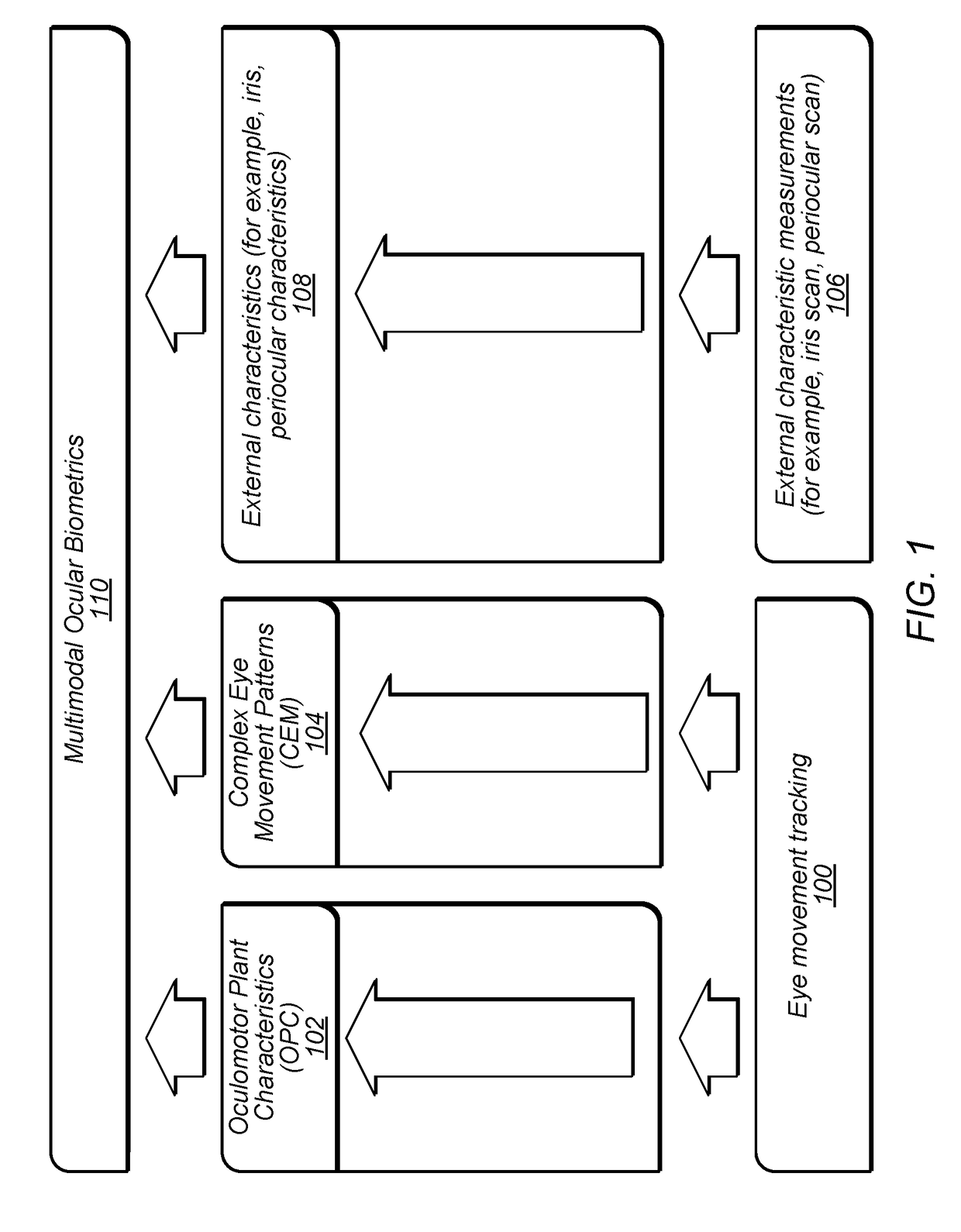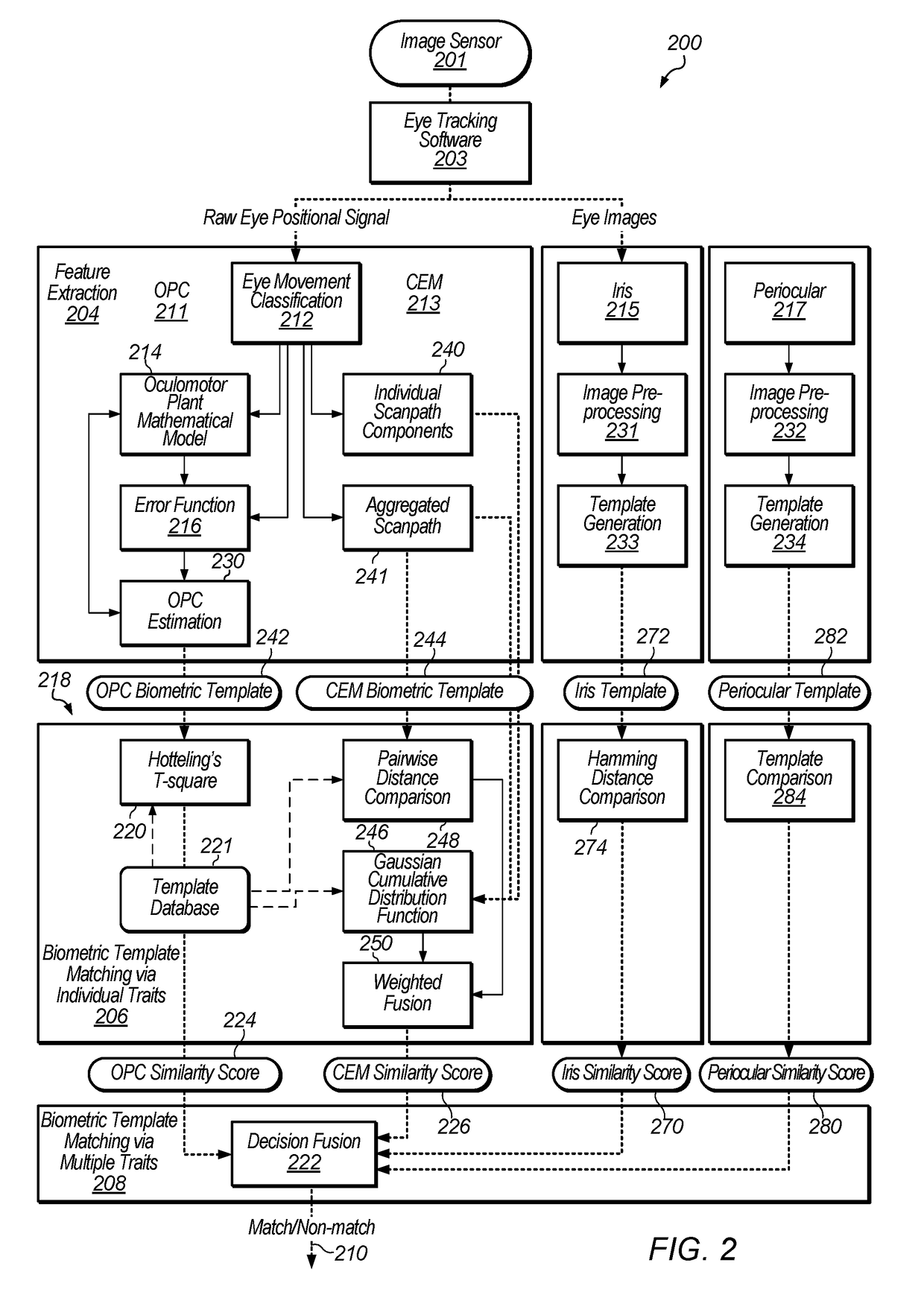Eye tracking via patterned contact lenses
a contact lens and eye tracking technology, applied in the field of eye tracking through patterned contact lenses, can solve the problems of requiring substantial computational resources to use, the most expensive eye tracking computational operation, and the inability to accurately detect the eye movemen
- Summary
- Abstract
- Description
- Claims
- Application Information
AI Technical Summary
Benefits of technology
Problems solved by technology
Method used
Image
Examples
Embodiment Construction
[0039]As used herein, to “sensing” an element includes sensing, detecting, or perceiving any attribute or combination attributes of element, including the element's existence, presence, location, state, velocity, motion, color, or shape. For example, sensing a pattern element includes sensing that the element is in particular location relative to other element of a pattern or to a spatial reference point.
[0040]As used herein, to “contact lens” includes a piece of material that can be worn on the surface of an eye of a person. As used herein, a contact lens may or may not gather, concentrate, disperse, filter, or modify light rays or electromagnetic waves. A contact lens may be made of glass, plastic, or other suitable material. A contact lens may have a circular shape or other shape.
[0041]As used herein, a “pattern” includes any arrangement of elements. A pattern may or may not have any repetition among the elements. For example, a pattern may include repeating sequence such as a-b-...
PUM
 Login to View More
Login to View More Abstract
Description
Claims
Application Information
 Login to View More
Login to View More - R&D
- Intellectual Property
- Life Sciences
- Materials
- Tech Scout
- Unparalleled Data Quality
- Higher Quality Content
- 60% Fewer Hallucinations
Browse by: Latest US Patents, China's latest patents, Technical Efficacy Thesaurus, Application Domain, Technology Topic, Popular Technical Reports.
© 2025 PatSnap. All rights reserved.Legal|Privacy policy|Modern Slavery Act Transparency Statement|Sitemap|About US| Contact US: help@patsnap.com



